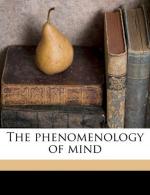
|
| Name: _________________________ | Period: ___________________ |
This quiz consists of 5 multiple choice and 5 short answer questions through Observation of the Relation of Self-Consciousness to Its Immediate Actuality- Physiognomy and Phrenology.
Multiple Choice Questions
1. What does Hegel mean by "concrete"?
(a) Devoid of consciousness.
(b) Filled with potential.
(c) Experiential and actual.
(d) Filled with divine actuality.
2. According to Hegel, self-consciousness is aware of itself relative to what?
(a) Desire and loss.
(b) Objects and universals.
(c) Infant fulfillment and abstract promises.
(d) Conscience and desire.
3. What is a pre-condition to Reason according to Hegel?
(a) Stable self-certainty.
(b) Double consciousness.
(c) Transcendent self-awareness.
(d) Stable sources of food and shelter.
4. What is it that indicates something about a person's unique traits, in Hegel's account?
(a) What a person does to their body.
(b) The marks on a body.
(c) The person's original body.
(d) A person's heridity.
5. According to Hegel, how does the truth of concrete individuals manifest?
(a) It manifests in action.
(b) It manifests in every decision.
(c) It manifests in self-conflict.
(d) If manifests without any doubt.
Short Answer Questions
1. What is the relationship between phrenology, physiognomy, and cranioscopy according to Hegel?
2. In Hegel's terminology, what does the term "sensibility" pertain to?
3. What did cranioscopy examine?
4. Observation functions with regard to what in Hegel's philosophy?
5. Where does Hegel locate the beginning of scientific knowledge?
|
This section contains 275 words (approx. 1 page at 300 words per page) |

|




